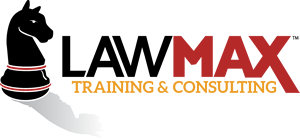Merriam-Webster defines networking as, “the exchange of information or services among individuals, groups, or institutions; specifically : the cultivation of productive relationships for employment or business.”
This definition states well the fine balance of exchange of services and productive relationships. Networking is a powerful skill that, like creating relationships, takes time and effort. It is a market strategy that can be used to drive business.
To tackle networking, we’ve broken it down into three easy things to consider.
Who are My Connections?
When networking, be clear who is a good connection. Usually, someone you already know is connected to your target market or target peers.
For example, if you are a financial advisor looking to work with small businesses, a good connection might be an attorney who practices small business law. Oftentimes you will have the same target market but serve it differently.
Other commonly missed connections are people in the same industry as you but with slightly different roles. For example, a small business attorney may connect with an attorney specializing in tax law who can advise clients on the ins and outs of taxes. A financial advisor in long-term care may connect with a financial advisor in medical who can refer them clients. Establishing these connections allows the two to receive business from the same target market.
Where Do I Find Connections?
Perform an assessment of your community. Look at organizations and professional trades, decide which is most beneficial and take the time to do your part.
Connecting with a smaller group by serving on the board of your favorite nonprofit organization will put you in direct contact with a handful of people in your community. Establishing quality relationships in smaller groups tends to be easier and extremely beneficial.
Professional and trade organizations will provide a larger group of people but maybe only a small amount will fall in your target market. Identifying your market and gaining connections may be harder to accomplish.
Both groups will have great connections. Decide what is most practical for your situation and get involved. Don’t discount reaching out to fewer people, often this is more productive.
ABA Journal has identified various ways to market your practice through getting involved in community activities. Do what you are interested in, organize industry dinners, and attend bar associations!
Take the Time
Acknowledging that relationships take time is important. Relationship building is not easy and many people struggle with this step. If you find that relationship building is hard, When to Take Relationships Offline will help you outline steps to make the process easier.
When you have identified your organizations, be prepared and willing to spend time engaging with others and getting involved. Taking time will add purpose and value while building relationships who are great referral sources or direct clients. Just remember: don’t jump to business, let it form!
Recognizing who your connections are, identifying beneficial organizations, and getting involved will jumpstart you to creating strong community networks. Networking is a balance between an exchange of services and cultivating relationships, Merriam-Webster could not have defined it any better.
